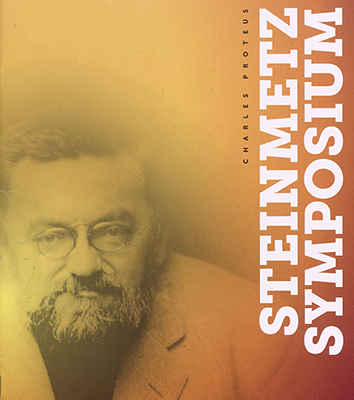Document Type
Open Access
Location
ISEC Lower Level
Faculty Sponsor
Ashok Ramasubramanian
Department
Bioengineering
Start Date
13-5-2022 12:30 PM
Description
Two vital and simultaneous morphogenetic events that occur during early embryo development are the flexure and torsion (F&T) of the embryonic body axis. Both contribute to development of the fetal position, which can be observed in avian and mammalian embryos. Correct progression of F&T is crucial for the proper development of the heart and other organs. Embryonic flexure can be divided into three segments: cranial, cervical, and thoracic. In this study, we focus on cervical flexure and torsion of the embryonic body axis. Differential cell proliferation, the difference in the rate of division of cells between regions in the developing embryo, is one mechanism that could influence F&T. Goodrum & Jacobson (1981) observed thickening of the dorsal midbrain relative to the ventral midbrain during cranial flexure. Miller & White (1998) have shown using mouse embryos that differential growth could cause torsion of an axis confined to an attached sphere. We performed studies inhibiting cell proliferation. Fertile white leghorn chick eggs were incubated to approximately Hamburger and Hamilton (HH) Stage 12 or 13. At these stages, F&T have just begun. We then added aphidicolin, a mitotic inhibitor, to whole embryo culture. Embryos were observed at 0, 5, and 10 hours to see if F&T were repressed. We hypothesized that the addition of aphidicolin would inhibit progression of F&T. We developed quantitative schemes to score the extent of F&T progression from HH 12 to HH 15. Embryos were scored from 0 to 4 based on the degree of cervical flexure and were also scored from 0 to 4 based on the degree of torsion. Afterward, the difference in F&T scores of same embryos at time t=0 h and t=10 h was calculated to determine the extent of both. These scores were then averaged for multiple embryos. Compared with controls (n=46), embryos incubated in 400 μM aphidicolin (n=18) flexed and rotated at a significantly lower rate. For flexion, the mean difference in scores for control and treated embryos were 1.85 and 1.22, respectively. For torsion, the mean difference in scores for control and treated embryos were 1.62 and 1.25, respectively. These differences were statistically significant. It is noted that global application of aphidicolin did impact the overall health of embryos. However, our preliminary results indicate that differential cell proliferation could play a role in rotation and flexure progression in the developing chicken embryo. References: Goodrum, G. R., & Jacobson, A. G. (1981). Cephalic flexure formation in the chick embryo. Journal of Experimental Zoology, 216(3), 399-408. doi:10.1002/jez.1402160308 Miller, S. A., & White, R. D. (1998). Right-Left Asymmetry of Cell Proliferation Predominates in Mouse Embryos Undergoing Clockwise Axial Rotation. The Anatomical Record, 250(1), 103-108. doi:10.1002/(sici)1097-0185(199801)250:13.0.co;2-s
Does Cell Proliferation Affect Embryonic Flexure and Torsion?
ISEC Lower Level
Two vital and simultaneous morphogenetic events that occur during early embryo development are the flexure and torsion (F&T) of the embryonic body axis. Both contribute to development of the fetal position, which can be observed in avian and mammalian embryos. Correct progression of F&T is crucial for the proper development of the heart and other organs. Embryonic flexure can be divided into three segments: cranial, cervical, and thoracic. In this study, we focus on cervical flexure and torsion of the embryonic body axis. Differential cell proliferation, the difference in the rate of division of cells between regions in the developing embryo, is one mechanism that could influence F&T. Goodrum & Jacobson (1981) observed thickening of the dorsal midbrain relative to the ventral midbrain during cranial flexure. Miller & White (1998) have shown using mouse embryos that differential growth could cause torsion of an axis confined to an attached sphere. We performed studies inhibiting cell proliferation. Fertile white leghorn chick eggs were incubated to approximately Hamburger and Hamilton (HH) Stage 12 or 13. At these stages, F&T have just begun. We then added aphidicolin, a mitotic inhibitor, to whole embryo culture. Embryos were observed at 0, 5, and 10 hours to see if F&T were repressed. We hypothesized that the addition of aphidicolin would inhibit progression of F&T. We developed quantitative schemes to score the extent of F&T progression from HH 12 to HH 15. Embryos were scored from 0 to 4 based on the degree of cervical flexure and were also scored from 0 to 4 based on the degree of torsion. Afterward, the difference in F&T scores of same embryos at time t=0 h and t=10 h was calculated to determine the extent of both. These scores were then averaged for multiple embryos. Compared with controls (n=46), embryos incubated in 400 μM aphidicolin (n=18) flexed and rotated at a significantly lower rate. For flexion, the mean difference in scores for control and treated embryos were 1.85 and 1.22, respectively. For torsion, the mean difference in scores for control and treated embryos were 1.62 and 1.25, respectively. These differences were statistically significant. It is noted that global application of aphidicolin did impact the overall health of embryos. However, our preliminary results indicate that differential cell proliferation could play a role in rotation and flexure progression in the developing chicken embryo. References: Goodrum, G. R., & Jacobson, A. G. (1981). Cephalic flexure formation in the chick embryo. Journal of Experimental Zoology, 216(3), 399-408. doi:10.1002/jez.1402160308 Miller, S. A., & White, R. D. (1998). Right-Left Asymmetry of Cell Proliferation Predominates in Mouse Embryos Undergoing Clockwise Axial Rotation. The Anatomical Record, 250(1), 103-108. doi:10.1002/(sici)1097-0185(199801)250:13.0.co;2-s


